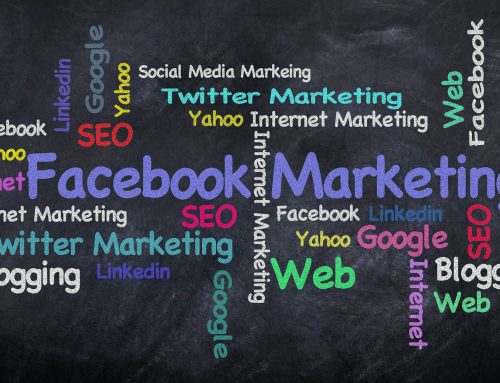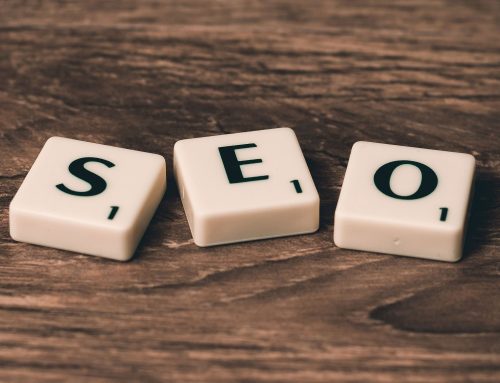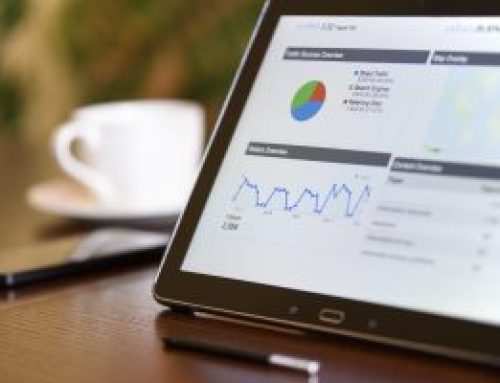Is social media a bit confusing for you? If you’re not sure what a DM or a GIF is, don’t worry! We’ve put together a simple guide to help you understand the common terms used online. There are lots of acronyms and short words, so here’s a quick cheat sheet to get you started with Pittsburgh social media marketing.
A is for Analytics
Describes the data that is collected from social media platforms, and activities on those platforms. For instance, clicks, likes, or shares on a Facebook post are all forms of social media analytics.
The analytics show 1,360 likes on the Instagram post.
B is for Bio
This term is short for biography. A social media bio is usually a short sentence or snippet about that profile (person, brand, product, etc.). All social platforms have an area to write a bio. Social media bios tell new or prospective followers a little bit about yourself (brand, product, etc.).
We need to update our Twitter bio.
C is for Connections
“Connections” is a common term used on LinkedIn. Connections are the equivalent of followers, but since LinkedIn is meant more for creating a network (of professionals you’re connected to), they utilize the term “connections” to describe professionals who mutually follow each other.
I have over 200 connections on LinkedIn.
D is for DM
DM is short for “Direct Message.” This slang term is mostly used on Twitter and Instagram, and is essentially a chat or instant message tool to contact other users of the platform. These messages are not visible to the public. The term “private message” is more commonly associated with Facebook messages.
DM me with any questions or more details!
E is for Emoji
An emoji is a small digital icon or image that expresses an idea or emotion. For instance, smiley faces express happiness, whereas a laughing face would express humor. There are thousands of emojis in existence, and even more continually come into existence.
I can’t believe that just happened! I’m going to use the surprised emoji.
F is for Feed
Feed is a generic term for the continually updated content on all social platforms. Users of Facebook and Twitter have a similar term they use when talking about the main page of their platforms: “newsfeed.”
I just saw the cutest puppy video in my Twitter feed.
G is for GIF
An acronym for “graphics interchange format.” GIFs are small animations or clips from movies or television shows. They often illustrate or convey an emotion. Most of the social platforms now have a GIF searching feature. You can also make your own GIFs if you have a great idea and some time to put it together. Here are some examples of a GIF for when you’re excited about something: https://giphy.com/search/excited
I have the perfect GIF for this moment.
H is for Hashtag
Hashtags are a way to tag your content and categorize it so it can be searched / found more easily. You can search for all content pertaining to that same category. It’s extremely useful in connecting yourself to people who use similar hashtags or other trending topics or events. Hashtags look like the pound symbol “#” followed by a keyword(s).
Should my Instagram caption be: “Living my best life #vacation”?
I is for Influencer
An influencer is someone who has a large presence / following on social media who is hired by a brand to generate awareness about a brand, product, trend, or other topic that his or her followers would be interested in. An ideal influencer should be passionate about the brand or product he or she is promoting.
This influencer would be perfect for promoting our new protein shake product.
J is for Join
This is typically a call-to-action button on a social media group or community to request access or membership to that group. Many people join groups so they can interact with people who have a similar interest.
I just joined a group on Facebook for teacup pig fanatics – you should join too!
K is for Keyword
A keyword is a word or term used for searching on social media. Keywords are the key to generating increased search engine optimization. In the world of social media, keywords are often in the form of hashtags.
Our next post needs to use these keywords: exercise, health, fitness, journey.
L is for Like
Like is a verb and a noun, initially used on Facebook, and commonly used across most other social platforms. It is an unspoken engagement tool of support for something (a photo, a post, an article, etc.).
Hannah’s graduation photo got over 200 likes!
M is for Mention
A mention is a way to tag a person or a brand in social media content. Oftentimes, when someone is mentioned by someone else, they get a notification. This is a good way to get a conversation started on social media in a direct way.
I mentioned you in a comment on that Facebook article about zucchini noodle recipes.
N is for Notifications
A notification is a message generated by the social network to alert your account about activity. For instance, if someone likes your post, you will get a notification to your account.
I have 25 Facebook notifications.
O is for Organic Reach
Organic reach refers to content that users see without paid promotion. Social content can be found organically if you follow a specific page, person, etc. who has recently updated their account.
We should try organic reach to start.
P is for Platform
Each social media outlet is known as a platform. Some examples of social media platforms include Facebook, Twitter, Instagram, and Pinterest.
Which platforms should we put this update on?
Q is for Quote Tweet
A quote tweet is when you retweet a tweet, but have the option to add a comment with the retweet.
Did you see what the Steelers just tweeted? I have to quote tweet that.
R is for Retweet
A retweet is a tweet you share from a different person’s account.
I just retweeted Chipotle’s latest tweet – it was so funny!
S is for Snapcode
A Snapcode is a scannable QR code unique to your account. You can add friends on Snapchat using the Snapcode.
Add me on Snapchat! Here’s my Snapcode.
T is for Trend(ing)
A trend is something that’s popular on a platform at a given moment. There is often a designated area for trends on each social platform, and some platforms provide trending topics that pertain to your interests (based on who you follow, what you like, who you engage with, etc.).
#PuppyMonkeyBaby is trending. What does that mean? I have to check it out.
U is for User-Generated Content
User-generated content is content created and published organically by users/followers. For instance, someone posts a selfie in their new sunglasses, and tags the brand of sunglasses they’re wearing. UGC (user-generated content) is beneficial to brands because it is a free form of advertising, and the brand doesn’t have to do any of the work. It’s content that’s being generated out of the goodness of the consumer.
Our brand has so much user-generated content on Instagram! We should have a contest soon.
V is for Verified
A social account is verified if a user proves they are who they say they are. Oftentimes, this is helpful for large brands, celebrities, or other public figures. However, recently Instagram made it easier to get verified.
Our brand has thousands of followers now, we should definitely work on getting verified!
W is for Webinar
A webinar is essentially an online seminar or presentation. The webinar can be hosted by a company or an individual person. These are usually live, streamable events, and oftentimes require special permission for access.
Did you sign up for the webinar for the WordPress tutorial?
X is for eXperience
“X” is a common shortcut for the word experience. It is mostly used in tandem with the letter “U” to form the word “UX” which is short for User Experience.
We might need to hire a UX expert for this project.
Y is for YouTube
YouTube is a social media platform used exclusively for publishing video content. Users can upload videos and share them with the public on YouTube. Videos on this platform can also be shared on other social media outlets.
Check out my latest YouTube video – it’s a tutorial on how to change a tire in 5 minutes!
Z is for Zealots
Zealots are followers of your brand who are exceptionally passionate about your brand. These people will support your brand and defend it.
Can you tell our social media zealots are so excited about our new product? They won’t stop posting about it!





